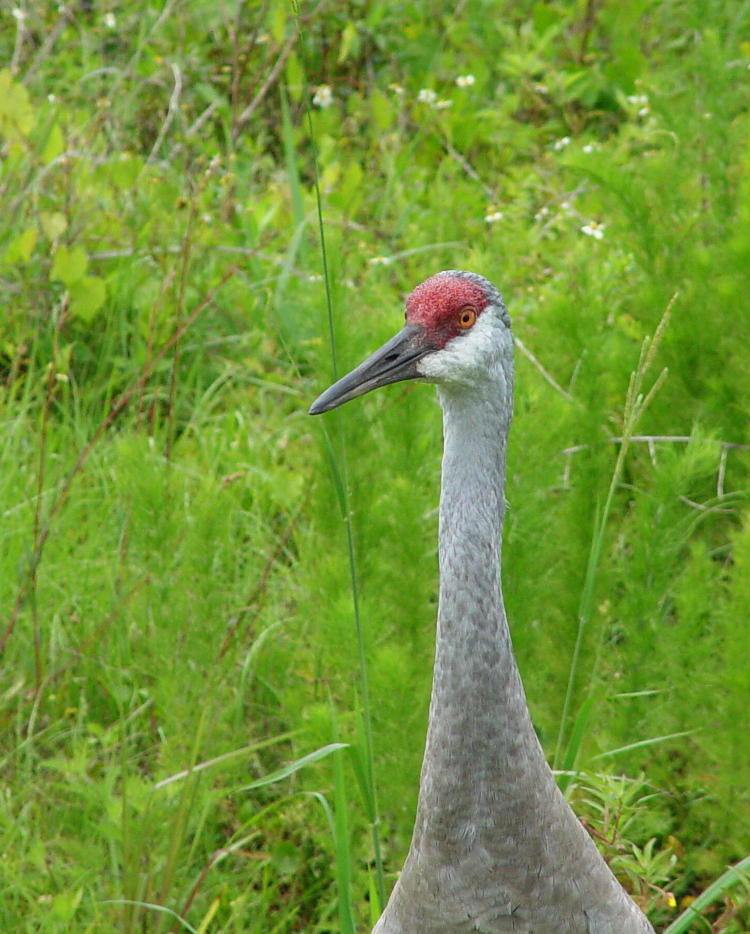
I actually use this image in my introductory nature photography seminar, as an example of what not to do, and also as a kind of penance. Initially it might look like an okay portrait of a sandhill crane (Antigone canadensis,) though it quickly becomes clear that it could be a lot better. The background is cluttered and complicated, and too close in focus to the crane itself. It’s not quite perfectly centered (which is generally boring – it should be off-center at least a bit more.) The trash throughout the grasses is hideous, but not half as hideous as the pole sticking out of the bird’s head! I am ashame.
In my defense, it was the first shot that I fired out the car window as we pulled up alongside a pair of the cranes right at the roadside in Florida, the ‘proof’ frame you get when you’re not sure if the animals will let you get anything more before they flee. I would have deleted it long ago, but it’s serving its purpose right at the moment.
And it must be said, I got the follow-up image only moments later, doing it a bit better this time.

Not exciting, but given the opportunity and conditions, probably the best I was going to get, and markedly improved. The clutter is gone, and while the background is not deeply out of focus, it is indistinct enough that the sharp crane stands out. The pose is a bit more interesting, not flat to the camera but giving a little depth and ‘personality’ – you get the feeling something interesting is happening just to your left. I boosted contrast just a hair to bring out the green better.
Neither of the pair was inclined to move from the spot, and were only stalking around in a very small area, quite close to the road, in a casual, bored manner. But after a moment, we discovered why they were hanging out.

Almost invisible among the verge, a baby sandhill was remaining inconspicuous, the adults not even seeming to notice it there, which kept it from drawing attention. While we had been hesitant to leave the car for fear of spooking the adults, even though it would mean better photo opportunities, finding the nestling clinched it: getting any closer would be a bad idea. After all, sandhill cranes stand about 150cm tall and have a beak that is at least 8 – not something you want defending its young from you.
Now, why this spot for nesting, I cannot say – it’s not like Florida doesn’t have plenty of better spots for a nest than within 5 meters of a road. Initially, I’d found that sandhills breed in the Canada, which made this even more out of place, but it appears (from the map) that some stay in Florida all year long.
Though it’s gonna be a while before I beat the image at the above link…



















































